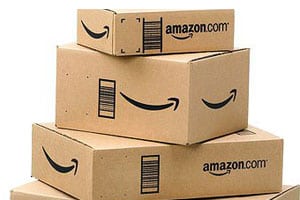 Amazon recently gave every distributor, wholesaler and brick-and-mortar retailer the motivation to get off the same-day delivery sideline with its wide launch of free same-day shipping. While it seemed a safe bet for merchants to assume customers wouldn’t expect same-day delivery for a few years, it’s officially wake up time.
Amazon recently gave every distributor, wholesaler and brick-and-mortar retailer the motivation to get off the same-day delivery sideline with its wide launch of free same-day shipping. While it seemed a safe bet for merchants to assume customers wouldn’t expect same-day delivery for a few years, it’s officially wake up time.
Amazon has built the technology to manage its operations, has a significant amount of experience in fast logistics, and can leverage its Prime volume to reduce rates, giving it a huge head start. Fortunately, there are resources and technology that let any business compete with Amazon’s same-day program. The first step, though, is a change in thinking.
Think strategically about logistics
I’ve spoken to many executives about same day, and their approach is fundamentally different than Amazon’s. The common refrain is “no one really wants it or is willing to pay for it.” While research may show that the majority of people don’t want it, Amazon has the power to shape customer desire. Plus, when was the last time anyone wanted to pay for anything?
Launching same-day delivery operations requires investment. Does a retailer, for example, expect an immediate profit when opening new stores? No, it’s a strategic investment in sales that will eventually be profitable but in the near term will increase sales and establish a competitive beachhead.
Merchants need to think about logistics with a sales mindset. If they keep putting off their own same-day initiative, waiting for rates to go down, and fretting about the required infrastructure investments, their competitors will beat them to the punch. Amazon’s growing ecommerce market is exhibit A of how a strategic, investment-driven logistics mindset (two-day Prime) yields sales growth and loyalty.
Offer multiple same-day service levels
Innovators, including eBay and Postmates, started the same-day revolution by offering one-hour delivery, and have molded how most people think about the service and its cost. However, these companies significantly subsidize the cost, and one-hour delivery is a premium service level that is rarely selected by customers, given a choice of same-day options. Customers of companies that have long offered same-day delivery rarely select one-hour service and instead select AM/PM. Amazon now offers one-hour and AM/PM service, but they’re driving the latter as the standard.
AM/PM is a much lower cost than one-hour service and, with sufficient volume and density, can be comparable to a discounted UPS Ground zone 1 delivery. Merchants need to invest early to make same-day attractive cost-wise to consumers; as more use it, the volume and density will grow, and they’ll need to invest less. They also need to offer customers a choice of same-day service levels, charging more for premium services (e.g., one hour or a scheduled window). A properly executed and priced multi-service-level approach can offset the early cost of an AM/PM service, allowing retailers to offer it to customers at an attractive rate.
Use a network of local delivery and courier companies
When it comes to offering same-day delivery, merchants have a few choices: Invest in a private fleet, which is cost-prohibitive; work with a startup like Postmates or Deliv, which limits you to one service level in only a portion of the U.S.; or work with the local delivery and courier industry, as do Google and Amazon.
The local delivery and courier industry has provided time-sensitive delivery services for more than 100 years. The drawback of working with them on a national scale is that you’ll need to work with dozens of couriers. Many shippers work with a managed transportation services (MTS) provider that specializes in local delivery, such as RR Donnelley or Ensenda. The MTS takes on everything from actively monitoring couriers’ quality and performance to auditing and paying their invoices.
A growing trend among progressive shippers – Restoration Hardware and Google, for example – is to use technology instead of working with an MTS because it gives them real-time visibility and direct control over the customer experience. Until recently, shippers could develop software in-house, which was the approach of most longstanding courier users, or heavily customize existing transportation or fleet management software. Over the past few years, several same-day and local delivery software specialists have emerged, providing merchants everything they need out of the box to quickly offer high-quality, cost-effective same-day delivery.
When it comes to offering same-day delivery, merchants need to start with an investment-minded approach, offering multiple service levels and pushing customers toward an AM/PM service. Coupled with a same-day and local delivery software specialist, merchants are then ready to take on Amazon.
Rob Howard is the founder and CEO of Grand Junction